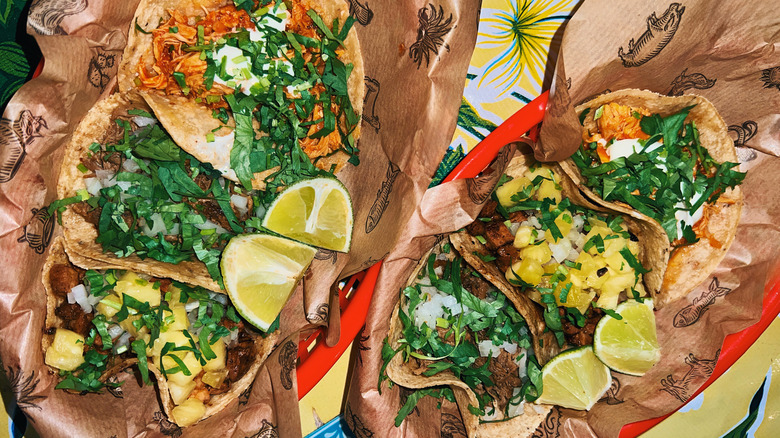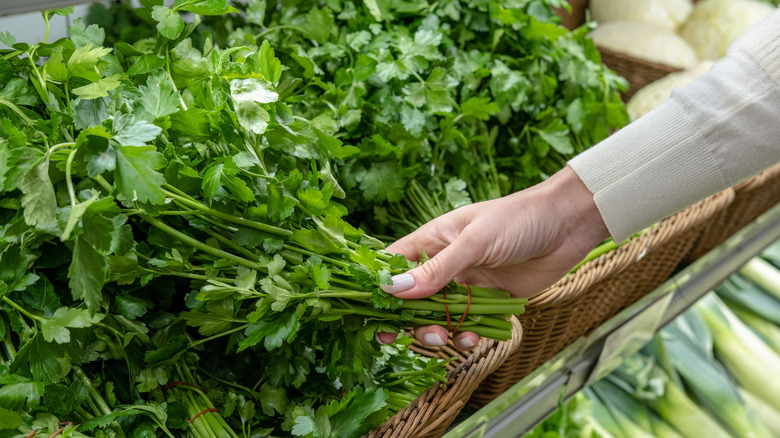If A Mexican Restaurant Doesn't Use Cilantro It Could Be A Red Flag. Here's Why
When you're craving a feast of crunchy tostados and hearty tamales, a trip to your favorite local Mexican restaurant is a must. While it's comforting to have a tried-and-tested haunt that always delivers, you might want to go somewhere different for a change. Just bear in mind that if a Mexican restaurant doesn't use cilantro, it could be a red flag.
Fragrant and verdant, fresh cilantro is a fundamental ingredient in many Mexican dishes, like guacamole and salsa. This citrusy herb has a punchy character and grassy note that's perfect for elevating basics, like creamy avocado and cilantro lime rice. Just as soy sauce, ginger, and chili are elemental ingredients in Chinese food, cilantro is a key player in Mexican cuisine. So if you're at a new Mexican restaurant and can't spot any fresh cilantro in your pico de gallo, something is definitely amiss. But why skip it?
As fresh herbs are perishable, they require immediate refrigeration to remain fresh. Though it's worth buying fresh cilantro over dried, the short shelf life of the fresh version and its delicate character mean it can cost more to transport and handle than dry spices, such as cumin and coriander, used to lend stews and birria an earthy complexity. If a Mexican restaurant omits the cilantro, it could be a sign that the establishment isn't performing well and may be trying to cut back on its outlays and tailor its menu to boost profit margins.
Cilantro can spoil quickly and become slimy
Restaurants tend to buy their produce in bulk from wholesale merchants to save costs, and the same goes for crates of fresh herbs. If these herbs aren't used quickly enough, they eventually rot and get slimy. This means some restaurants may not purchase cilantro in high quantities to reduce the risk of losing money. However, as cilantro complements the warming flavors found in many Mexican meals, a dish served without it can taste incomplete. While the pretty leaves are perfect for garnishing due to their vibrant hue (a lush green color is just one of the signs to look for when buying fresh cilantro), their flavor is also indispensable for balancing out the heat of spicier ingredients and imbuing dishes with a brighter and zestier vibe.
Some people steer clear of Mexican cuisine because they don't enjoy the taste of cilantro, describing it as soapy (a genetic quirk, whereby they perceive the soapy flavor of the aldehydes in the leaves more strongly than others). If you aren't a fan of cilantro, you can request your meal without it. In fact, if a Mexican eatery is happy to tailor your dish to your requirements, it's a total green flag.

